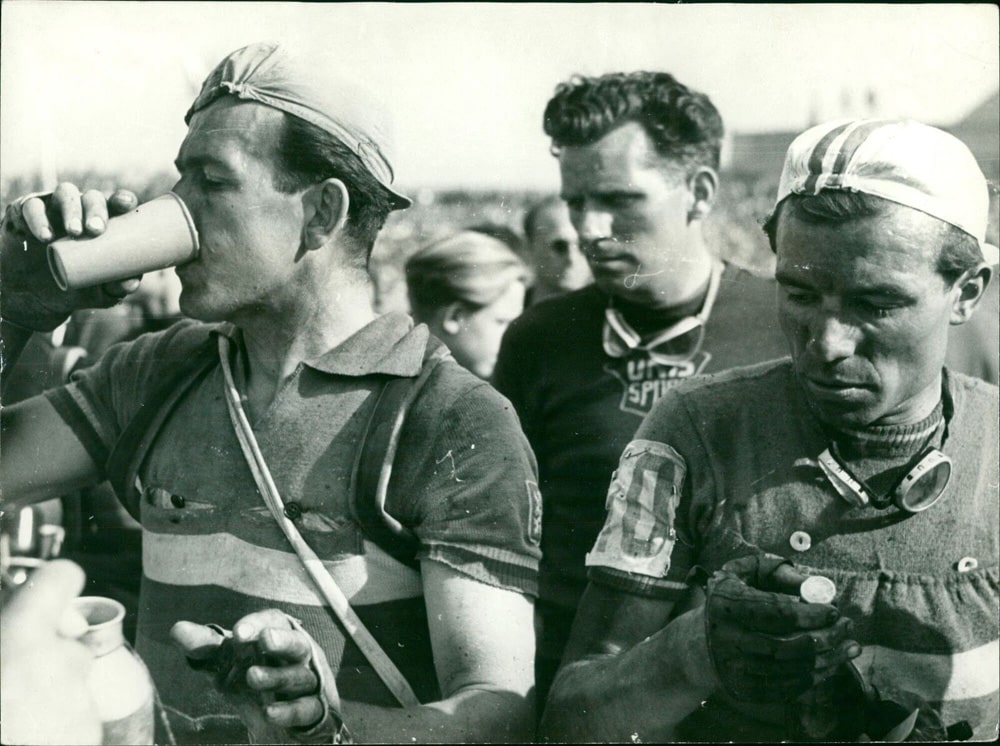Cycling’s manifold attractions include the drama of athletic competition, personal health and environmental benefits, breakthrough technologies, travel and tourism promotion, and, surprisingly often, a political dimension. Most of us are familiar with the bicycle’s enthusiastic acceptance by early feminists and in the United Kingdom the Clarion Cycling Club was named for a socialist newspaper and retained strong links to the labour movement. Smarting from the loss of French territory resulting from the Franco-Prussian War, Tour de France founder and ardent nationalist Henri Desgrange made sure from 1906 to 1910 that his race was going to include Alsace and Lorraine, German occupiers be damned.
A short promotional video has been created giving an idea of the book and its contents:
The most interesting of these political instances may be the Peace Race, which ran in three East Bloc nations for decades before fading away with the Cold War’s end. A new book by Oliver Knight and Dominik Rukat is about to be launched, covering not only the race but also the important school of graphic artists who celebrated it in the bold colours of their powerful posters.


The Peace Race (“Course de la Paix”) was launched in 1948 as the Warsaw-Prague (or Prague-Warsaw) bicycle race, covering routes in Poland and Czechoslovakia. Oddly, it was actually two races: a seven stage 1100 km race from Warsaw to Prague, and a five stage 842 km one in the opposite direction! That only lasted for a year after which the start city alternated each year. It was essentially meant as a socialist propaganda event, a kind of counterpoint to the overtly commercial Tour de France, and was open to amateurs (or pseudo-amateurs, as many were in the Soviet Bloc to maintain their Olympic qualifying status) from all nations. The white dove was adopted as the race’s symbol, reflecting the underlying goal of being a festival of sportsmanship and goodwill. Labour organizations in Italy, France and Finland sent representatives at the beginning and for Western participants there was an opportunity to look at the world behind the Iron Curtain. Any country could send a six man team and there were winners named in the overall, climbers’ and sprinters’ competitions, as well as team classification.


In 1950 the official name became the Peace Race and in 1952 East Germany was added, making a Warsaw-Prague-Berlin race. Given the recent hostilities in Europe, this was seen as a form of reconciliation between former enemies and was certainly a success in both sporting terms and spectator audience. It has been claimed that more people watched the Peace Race than the Tour de France and this could be true, given the paucity of sporting events easily accessible to citizens of the Soviet Bloc. While the Soviet Union, East Germany and Poland had the most wins over the history of the race, there were victors from Britain, Denmark, France and the Netherlands before the fall of the Berlin Wall in 1989. Subsequently the nature of the race changed as former Eastern amateurs now became professionals with established Western European teams. After the 1993 separation of Slovakia and the Czech Republic, the race no longer visited the former and while it reached Belgium and the former Federal Republic of Germany in the early 2000s it ran out of money and was gone by 2007. An important Czech U23 race, begun in 2013, retains the Peace Race name.



What was “the Polish School of Posters?” A loose collective of designers and artists in Warsaw were given support by the government to produce film and propaganda posters and did so from the 1940s into the 1980s and while there was an “anti-western” tinge to the remit, oversight seems to have been limited and the artists were given a great degree of freedom in their work, which was bold and striking and actually at times subversive. The Polish poster, marrying the ambition of paintings with the easy accessibility of poster graphics, became a recognized national tradition. While designers covered a seemingly infinite number of subjects in those decades, their contribution to the Peace Race’s visibility is unquestionable. One might view these posters as streamlined descendants of those Art Nouveau cycling posters so iconic even today.


“The Peace Race – Immortalised by the Polish School of Posters” gives a pleasing insight into what this race must have been like in its heyday, something very different from the mainstream European pro races where histories are so well documented.

We have previously reviewed Oliver Knight’s excellent books on classic cycling jerseys:
The Cycling Jersey Craftsmanship, Speed and Style.
and
Pro Cycling Style – Woven into History.
and this book has all appearances for meeting the high standard of those. It will cover the history of the Peace Race from different perspectives: the race itself, the artworks promoting it, interviews from racers and designers, the Cold War context of the race and, for the delight of collectors, wonderful memorabilia that remain as tangible items from a race unknown to most but deserving of the appreciation of cycling and art enthusiasts.

The two previous books on jerseys noted were successfully launched through crowdfunding and Oliver Knight is approaching this third book in the same way. This is an opportunity for Pez readers to participate in the creation of a highly original and attractive publication. Release of this 200 page hardcover book is tentatively scheduled for September 2024. The funding campaign began on May 31 and details may be found here: www.kickstarter.com/projects/thepeaceracebook/the-peace-race-and-the-polish-school-of-posters-book.


